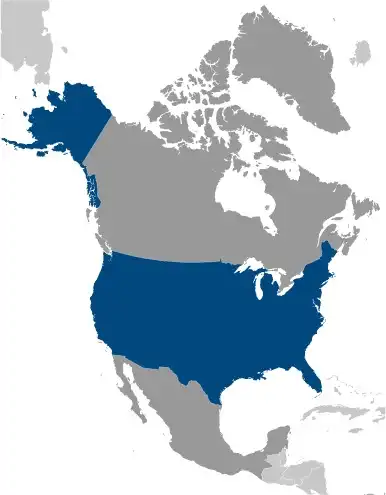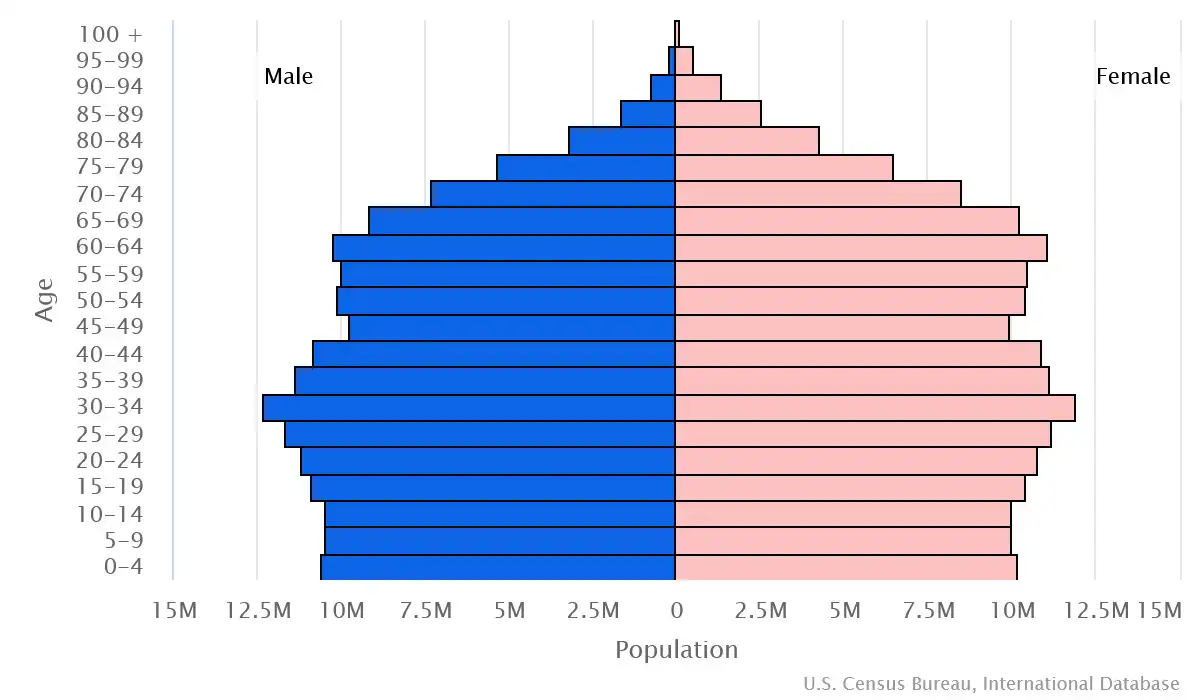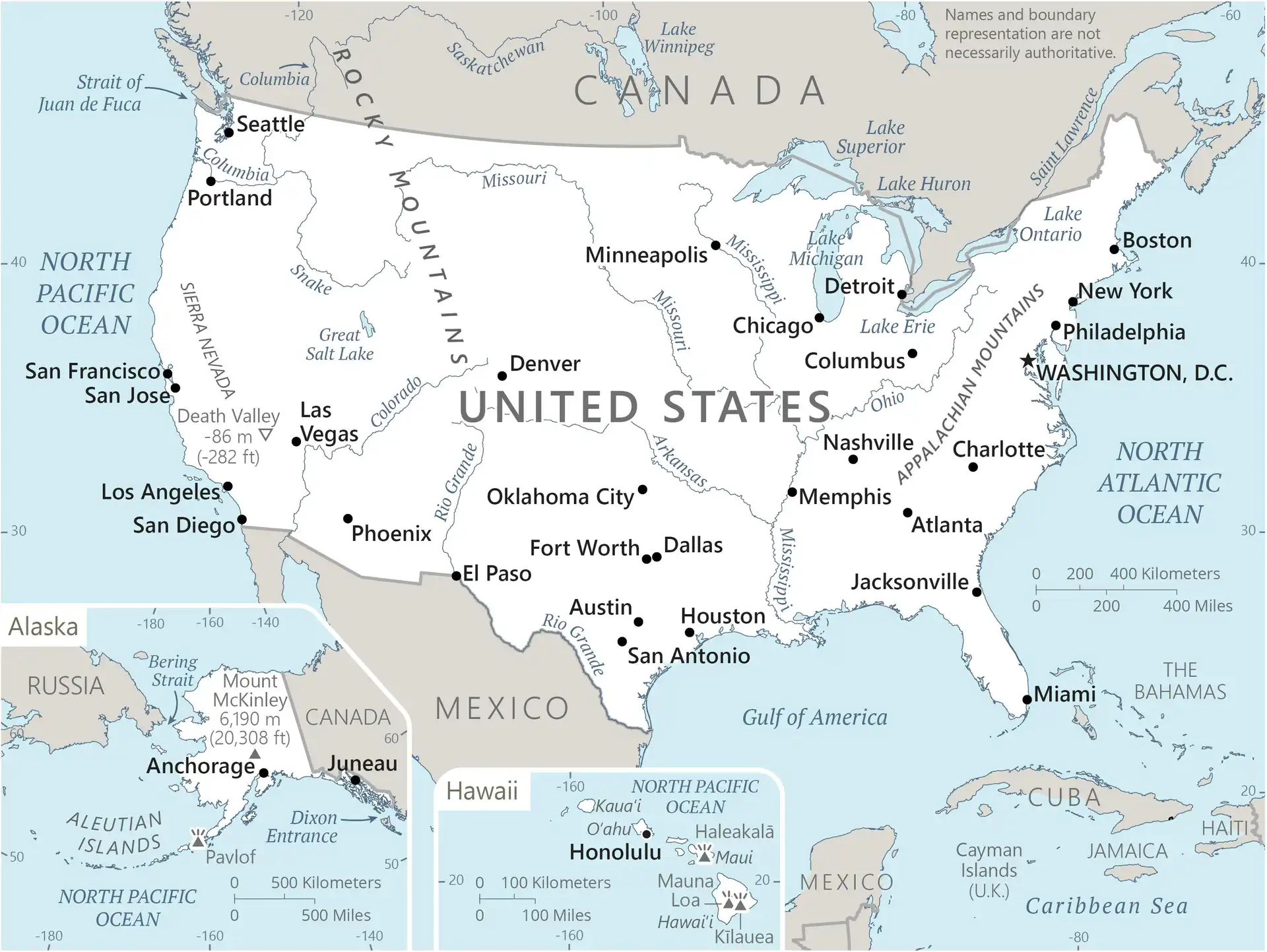
United States
Country Data Dashboard

| Government type: | constitutional federal republic |
| Capital: | Washington, DC |
| Languages: | English only 78.2%, Spanish 13.4%, Chinese 1.1%, other 7.3% (2017 est.) |
People & Society
Ethnicity (2020 est.)
Religion (2014 est.)
Age structure

Economy
Economic overview
high-income, diversified North American economy; NATO leader; largest importer and second-largest exporter; home to leading financial exchanges; high and growing public debt; rising socioeconomic inequalities; historically low interest rates; hit by COVID-19
Real GDP (purchasing power parity) in Billion $
Real GDP per capita in $
Exports & Imports in trillion $
Top 5 Import Partner in 2022 (55%)
Top 5 Import Commodities in 2022
- crude petroleum 🛢️
- cars 🚗
- broadcasting equipment 📡
- garments 👕
- computers 💻
Top 5 Export Partner in 2022 (55%)
Top 5 Export Commodities in 2022
- refined petroleum ⛽
- crude petroleum 🛢️
- natural gas 💨
- cars 🚗
- integrated circuits 💻
Geography
Map

Area
Natural resources
- coal ⚫
- copper 🟧🪙
- lead 🪙
- molybdenum 🪨
- phosphates ⛏️
- rare earth elements 🪨🪙💎
- uranium ☢️
- bauxite 🪨
- gold 💰
- iron 🛠️
- mercury ⚗️
- nickel 🪙
- potash 🪙
- silver 🪙
- tungsten 🔧
- zinc 🔩
- petroleum 🛢️
- natural gas 💨
- timber 🌲
- arable land 🌱
Climate
mostly temperate, but tropical in Hawaii and Florida, arctic in Alaska, semiarid in the great plains west of the Mississippi River, and arid in the Great Basin of the southwest; low winter temperatures in the northwest are ameliorated occasionally in January and February by warm chinook winds from the eastern slopes of the Rocky Mountains
Historical Background Information
Thirteen of Britain's American colonies broke with the mother country in 1776 and were recognized as the new nation of the United States of America following the Treaty of Paris in 1783. During the 19th and 20th centuries, 37 new states were added as the nation expanded across the North American continent and acquired a number of overseas possessions. Two of the most traumatic experiences in the nation's history were the Civil War (1861-65), in which a northern Union of states defeated a secessionist Confederacy of 11 southern slave states, and the Great Depression of the 1930s, an economic downturn during which about a quarter of the labor force lost its jobs. Buoyed by victories in World Wars I and II and the end of the Cold War in 1991, the US remains the world's most powerful nation state. Since the end of World War II, the economy has achieved relatively steady growth, low unemployment, and rapid advances in technology.
